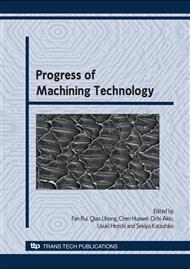p.654
p.658
p.662
p.667
p.672
p.676
p.680
p.684
p.690
Prevention of Burr Formation in Face Milling of Carbon Steel by Laser Hardening
Abstract:
. Burr is formed at workpiece edge in most metal cutting process. These burrs make troubles on production lines in terms of added cost and time for deburring process. The purpose of this study is to investigate the influence of workpiece hardening on the burr formation in face milling of carbon steel AISI 1045. Before machining, laser hardening by CO2 laser is irradiated on the side face along the line where burr is expected to be formed. The laser irradiated area of carbon steel has high hardness and brittle characteristic in comparison with mother phase. In case of machining laser hardened workpiece, the burr height was smaller compared with standard steel. By controlling laser irradiation conditions, burr is not observed so that the chipping (negative burr) like chamfering is caused. From these results, it was clarified that laser hardening is effective to prevent burr formation and this technique can be applied to high efficiency processing.
Info:
Periodical:
Pages:
672-675
Citation:
Online since:
February 2009
Keywords:
Price:
Сopyright:
© 2009 Trans Tech Publications Ltd. All Rights Reserved
Share:
Citation:


